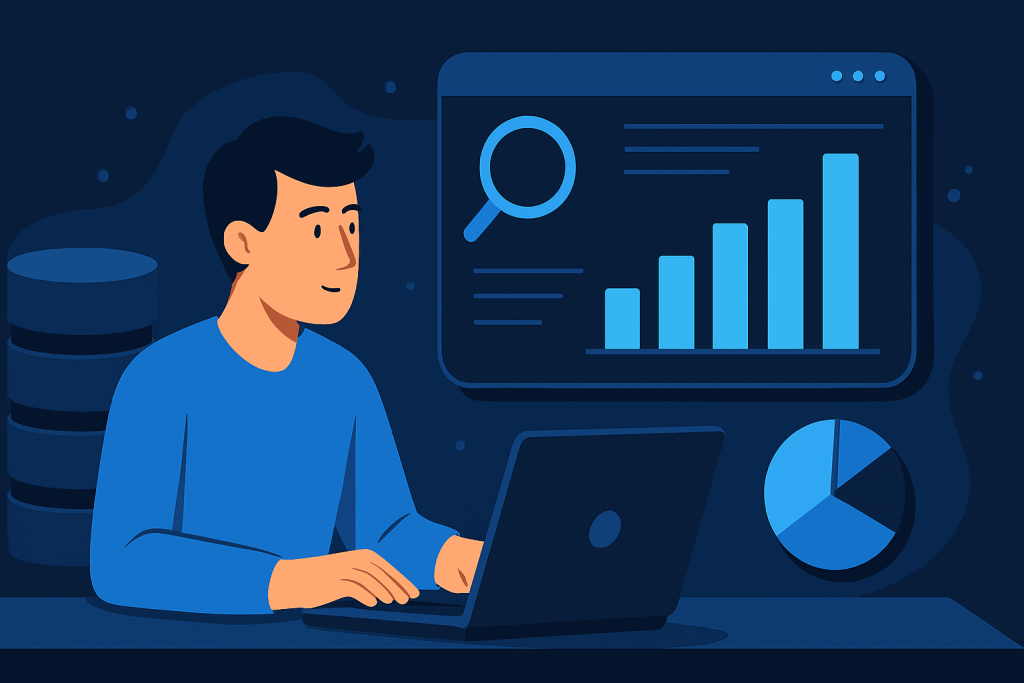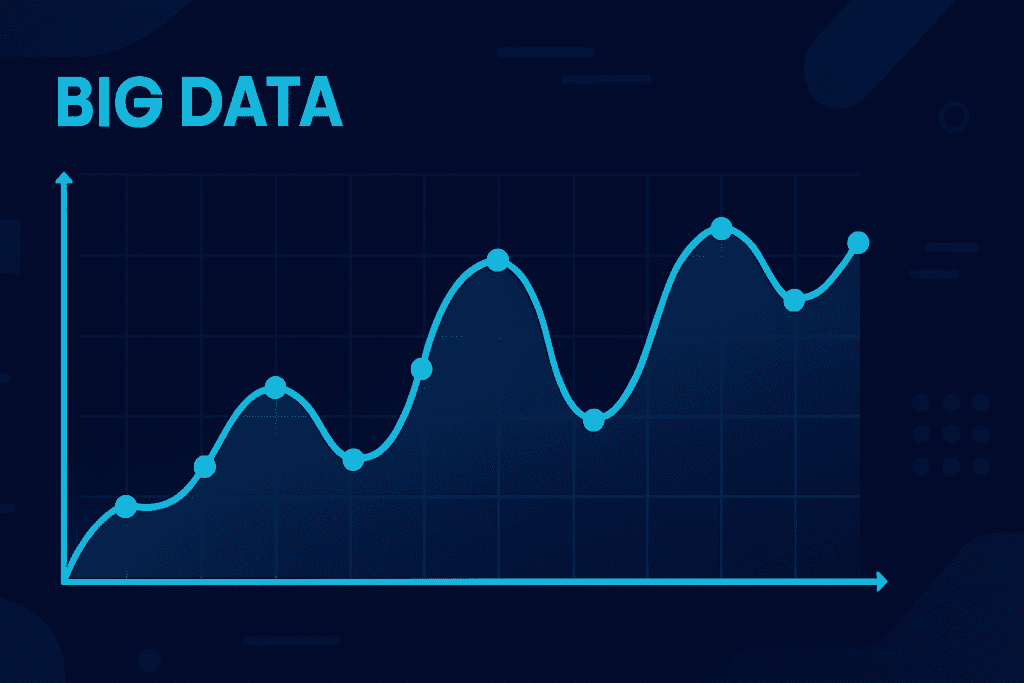In today’s hyperconnected digital economy, information is everywhere flowing from smartphones, sensors, websites, satellites, and even refrigerators that “talk” to the cloud. This explosion of information is what we commonly refer to as Big Data. Far more than just numbers stored in spreadsheets, it’s the enormous, complex sets of digital information that help businesses, governments, and researchers uncover meaningful patterns, predict future behavior, and make smarter decisions.
The concept of Big Data has become a cornerstone of modern society, influencing everything from targeted advertising to climate research. Whether you’re streaming music, receiving personalized shopping recommendations, or navigating through traffic apps that suggest faster routes, you’re interacting with systems powered by it.
Understanding data isn’t just for tech enthusiasts—it’s crucial for anyone interested in how our world operates today. Let’s explore its definition, history, types, advantages, and real-world uses to see why it’s a driving force for growth. Beyond its technical aspects, Big Data also raises cultural, ethical, and legal considerations. Organizations must balance the pursuit of innovation with privacy, transparency, and fairness. Regulations like GDPR in Europe and similar policies worldwide now shape how companies collect, store, and use personal data.

What is Big Data?
At its simplest, Big Data refers to vast and complex datasets that traditional data-processing tools cannot easily store, analyze, or interpret. These datasets come in various forms:
- Structured (like databases)
- Semi-structured (like XML or JSON logs)
- Unstructured (like social media posts, emails, or videos)
Common synonyms include “massive data,” “large-scale data,” or “digital data ecosystems.” Regardless of the term used, the essence remains the same: using advanced analytics, storage systems, and computational power to extract insights from overwhelming amounts of information.
Unlike conventional data, Big Data is defined not only by size but also by its complexity and the challenges it poses in processing. It requires specialized systems such as distributed computing frameworks, cloud platforms, and AI-driven analytics to transform raw inputs into actionable insights.
Breaking Down Big Data
Big Data isn’t just about size—it’s about complexity and usefulness. Analysts often describe it using the “5 Vs” framework:
Volume
The sheer amount of data, often measured in terabytes or petabytes. Example: Facebook processes billions of photos and interactions daily.
Velocity
The speed at which data is generated, from live financial trades to real-time health monitors. Example: Streaming services analyze what you watch in real time to recommend the next show.
Variety
Different formats: text, images, video, audio, or sensor data. Example: A smart city integrates traffic cameras, GPS, and weather reports to manage congestion.
Veracity
The accuracy and trustworthiness of the data. Poor-quality data can lead to flawed decisions.
Value
The actual business or social insights derived from analyzing it. Without value, data is just noise.
Example in action: A global retailer like Amazon collects billions of clicks, searches, and purchases daily. This isn’t just stored—it’s analyzed to suggest the next product you might want. Similarly, hospitals use real-time patient monitors to predict critical health events before they happen.est the next product you might want. Similarly, hospitals use real-time patient monitors to predict critical health events before they happen.

History
While it feels modern, Big Data has roots that go back decades.
| Year/Period | Milestone | Impact |
|---|---|---|
| 1960s–70s | Early databases and mainframes | Structured data collection begins |
| 1989 | World Wide Web invented | Explosion of digital information |
| 2001 | “3 Vs” framework introduced by Doug Laney | Formal definition of Big Data |
| 2010s | Rise of cloud computing and AI | Advanced analytics become accessible |
| 2020s | AI and IoT adoption | Real-time predictive insights |
From early databases to AI-driven predictions, the journey shows how Big Data evolved into a central driver of growth and innovation.
Types of Big Data
It can be categorized into three main types, each serving different needs:
Structured Data
Information neatly stored in tables, such as bank transactions, census records, or medical data.
Characteristic: Organized, easy to query using SQL.
Unstructured Data
Data without a predefined format, like tweets, videos, audio files, or customer reviews.
Characteristic: Rich in insights but harder to analyze.
Semi-Structured Data
Partially organized formats such as JSON, XML, or log files from web applications.
Characteristic: Flexible, but requires parsing and interpretation.
| Type | Example | Characteristics |
|---|---|---|
| Structured | Sales databases | Organized, easy to query |
| Unstructured | Tweets, videos | Complex, harder to analyze |
| Semi-Structured | XML, JSON | Flexible but requires parsing |
How Does Big Data Work?
Big Data works through a four-step cycle:
- Collection – Data comes from multiple sources: sensors, mobile apps, financial systems, or online platforms.
- Storage – Modern solutions like Hadoop and cloud platforms (AWS, Google Cloud, Azure) handle massive volumes.
- Processing – Technologies like Apache Spark or Flink process data across distributed servers for speed.
- Analysis – AI and machine learning algorithms uncover hidden patterns, correlations, and predictions.
Think of it like an assembly line: raw data enters at one end, and actionable insights come out the other
Pros & Cons
Like any technology, it has strengths and limitations
| Pros | Cons |
|---|---|
| Enables smarter decision-making | High infrastructure costs |
| Drives innovation and growth | Privacy and ethical concerns |
| Real-time insights | Complex implementation |
| Improves efficiency | Risk of data overload |
| Supports predictive analytics | Requires skilled professionals |
Uses of Big Data
It’s a powerful tool applied across industries, helping organizations make smarter decisions and improve efficiency.
Education
Schools and universities use it to analyze student performance, guide curriculum planning, and optimize resources like IT and classrooms.
Business
Companies rely on it to track customer behavior, spot market trends, and design personalized products or services that boost revenue.
Artificial Intelligence and Enterprises
Enterprises combine Big Data with AI to predict equipment failures, detect fraud, and automate decisions at scale across entire systems.
Healthcare
Hospitals and clinics use it to analyze patient records, imaging, and lab results, improving diagnostics, managing chronic conditions, and creating tailored treatment plans.
Think of Big Data as the modern compass for decision-making. Just as a compass guides travelers through unknown terrain, Big Data guides industries by turning overwhelming information into clear, actionable insights. Without it, organizations risk missing patterns, falling behind competitors, or making decisions blind to real-world dynamics.
Resources
- Forbes Tech Council. How Big Data Is Transforming Business
- IBM. Big Data & AI Solutions
- Coursera. Big Data in Health Care: What It Is, Benefits, and Jobs
- EdTech Magazine. Big Data
- Brookings. Big Data for Education: Data Mining, Data Analytics, and Web Dashboards
